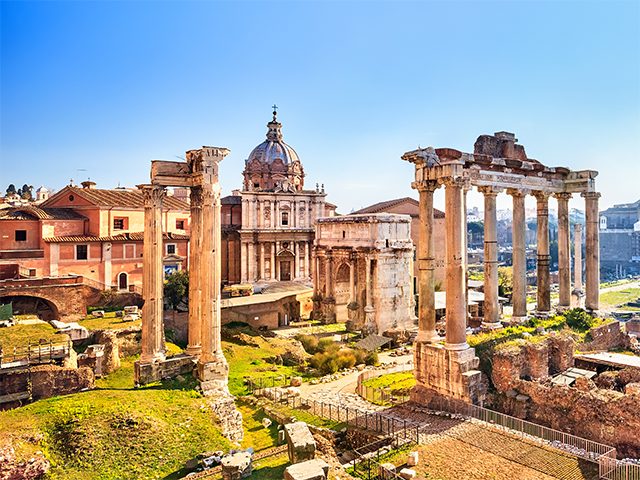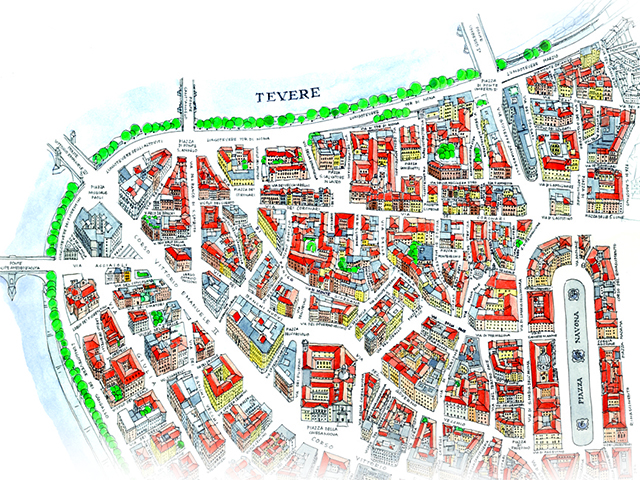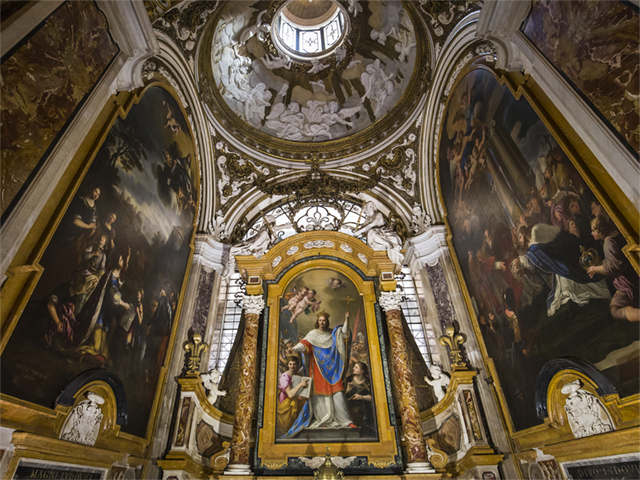The Jewish ghetto of Rome: history, how to get there and where to eat
Some tips on how to visit the oldest Jewish ghetto in the world: find out information about the Synagogue, the Jewish Museum, the Portico d'Ottavia and good restaurants.The Jewish ghetto of Rome is one of the most beautiful hidden treasures of the city. Visiting this small neighborhood, delimited by the Tiber river on one side and by Venice Square on the other, is not only a cultural and religious experience, because of the Synagoghe and the Jewish museum, but also a culinary one, thanks to the many typical restaurants scattered throughout the ghetto.
BOOK THE WALKING TOUR TO TRASTEVERE AND THE JEWISH GHETTO
A LITTLE BIT OF HISTORY AND THE ROUNDUP OF 16 OCTOBER 1943
Roman Ghetto is considered to be the oldest in the western world. Pope Paul IV ordered its construction in 1555, revoking all the rights that have been granted to the Roman Jews. Originally the quartier only had two points of access. Everyday life for jewish people was very hard and they were subjected to a series of requirements and restrictions, such as the following: the obligation to reside within the ghetto and to always carry a distinctive sign of belonging to the Jewish community, prohibition to carry out any kind of trade except those related with rags and clothing, or to own real estate.
Jews people did as best they could with the hand they were dealt, becoming shrewd clothing merchants and skilled businessmen in the field of loans.
At the dawn of the October 16, 1943 the Nazis surrounded the neighborhood and captured over 1,000 Jews people by force from their homes. Two days later the prisoners were loaded onto a train bound for Auschwitz: of the 1,023 deportees only 16 survived the extermination.
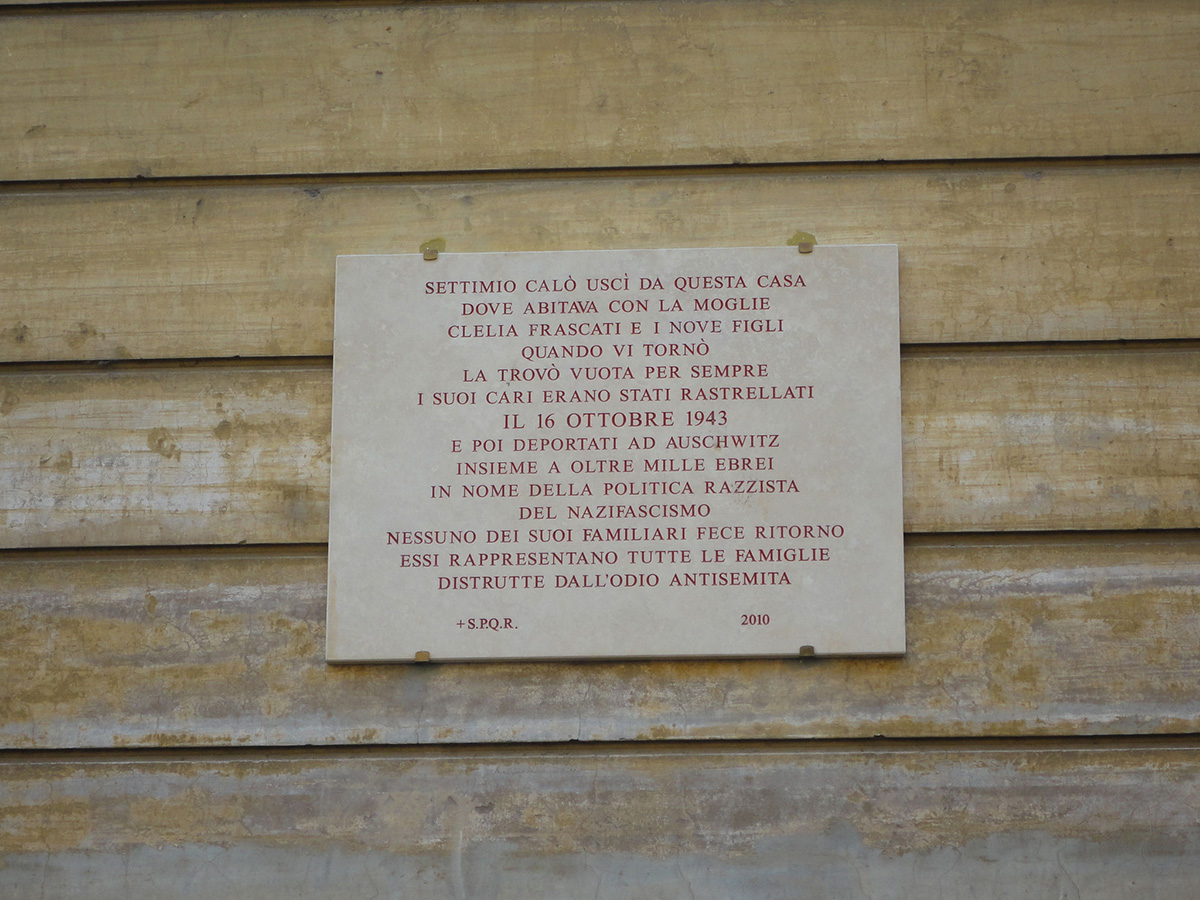
Commemorative plaque to one of the 1,000 victims of the Nazis extermination of the 16 October 1943 in the Roman ghetto
Over the years the ghetto expanded its territorial boundaries until the "liberation" of 1849 when, following the proclamation of the Italian Republic, segregation was abolished. In 1870 Jews people were put on the same footing as Italian citizens and over the years the old streets and buildings were demolished to make way for the construction of new buildings and three new streets: Via del Portico d'Ottavia, Via Catalana and Via del Tempio.
WHAT TO SEE IN THE JEWISH GHETTO OF ROME
The Synagogue is one of the most popular tourist attractions (see the box at the bottom for more information and visiting hours) of the Roman ghetto. The "Tempio Maggiore" is a large two-storey building with a square base and a large dome. This Synagogue is, above all, a place of prayer and a very important cultural reference point for the entire Jewish community.
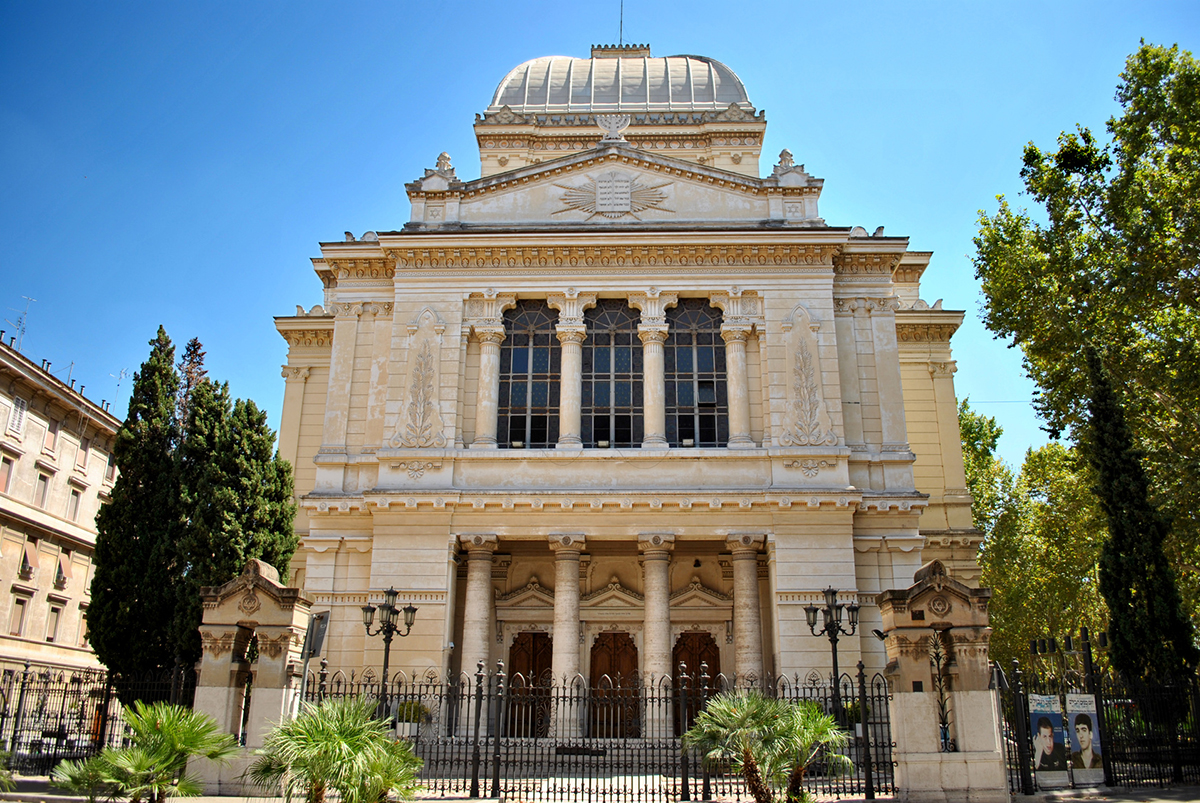
The Synagogue or Tempio Maggiore is one of the most important religious and cultural symbols for the Jewish community in Rome
The basement houses the Jewish Museum and the Spanish Temple, a small synagogue which is well worth a visit.
The Synagogue was designed and finished in 1904 by architects Osvaldo Armanni and Vincenzo Costa, inspired by Assyro-Babylonian patterns. As planned, you can see the Temple from different viewpoints of the city. This makes the Synagogue one of the iconic symbols of the Jewish Ghetto of Rome.
The Portico d'Ottavia dates back to the 2nd century BC and it is one of the most interesting monuments. In the Middle Ages a large fish market and a church were built on the ruins of the Portico. We recommend a walk through these ruins.
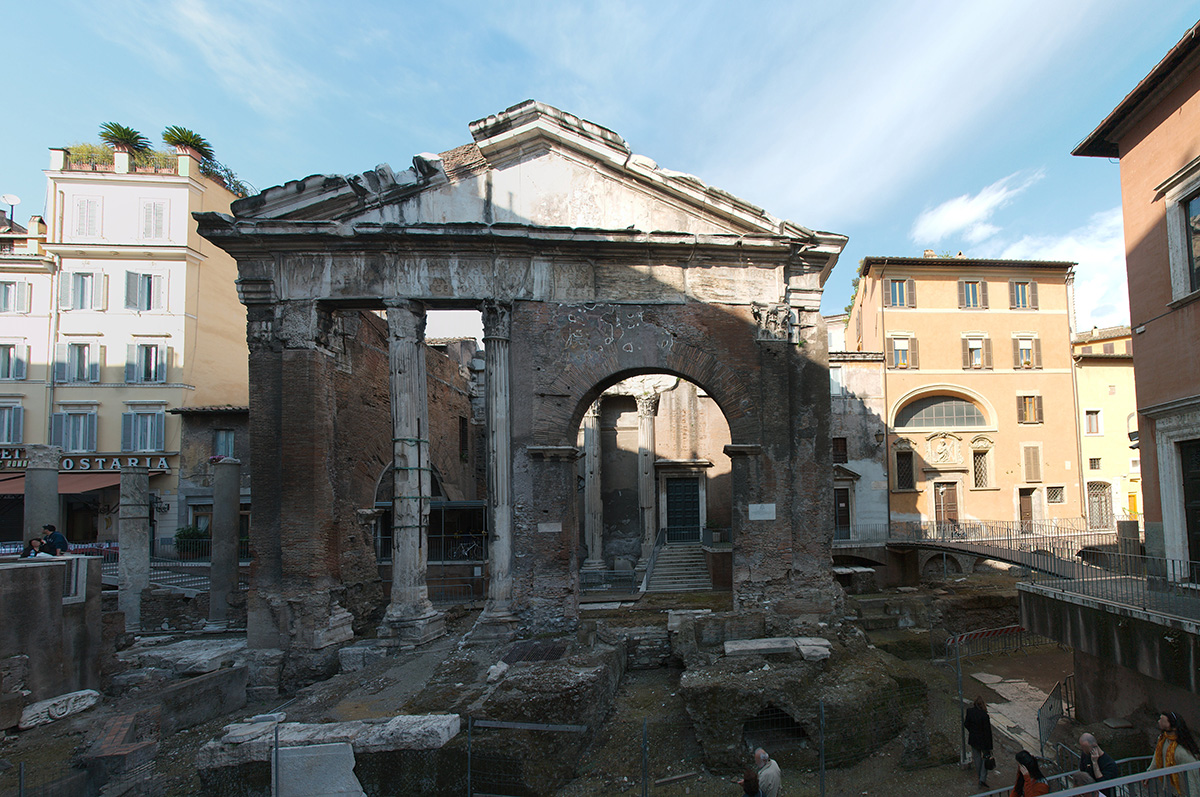
Portico d'Ottavia, one of Rome's most beautiful archeological sites - Photo by Matthias Kabel, CC BY-SA 3.0
From the Portico d'Ottavia it is possible to go directly to Teatro Marcello, the 'little Colosseum' from which it differs in its small size and semi-circular structure (the Colosseum is more round, as the classical amphitheatres).
The Turtle fountain is a little jewel in the ghetto. It was built towards the end of the 16th century for a challenge. Duke Mattei ordered to erect this beautiful fountain in a single day, having it built in front of the windows of his beloved's father to prove that he was an important man. The turtles were built in 1658 by Bernini.
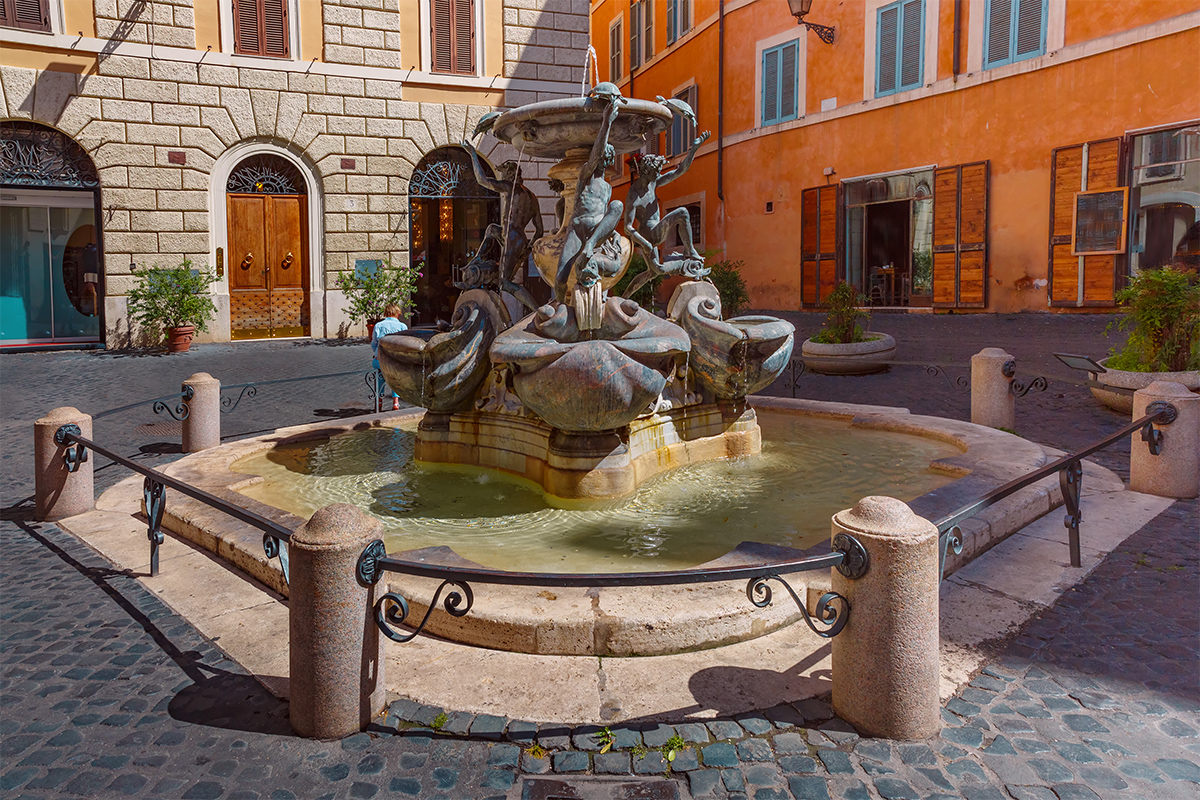
The Turtle Fountain was built for a challenge. The turtles are Bernini's artwork.
Finally, don't miss a walk to the nearby Tiber island, the smallest inhabited island in the world.
WHERE TO EAT: THE GHETTO AND KOSHER FOOD
Kosher "philosophy" is the basis of Jewish cuisine. Kosher is nothing more than a set of rules (of religious nature and origins) on which is based the diet of Jewish people. Kosher in fact means "permitted", "in accordance with the law".
But what to order in a restaurant in the ghetto? Certainly fish broth, which is a top delicacies, but also Jewish-style artichokes "alla giudia" (but only in March), cod fillets and stuffed fish.
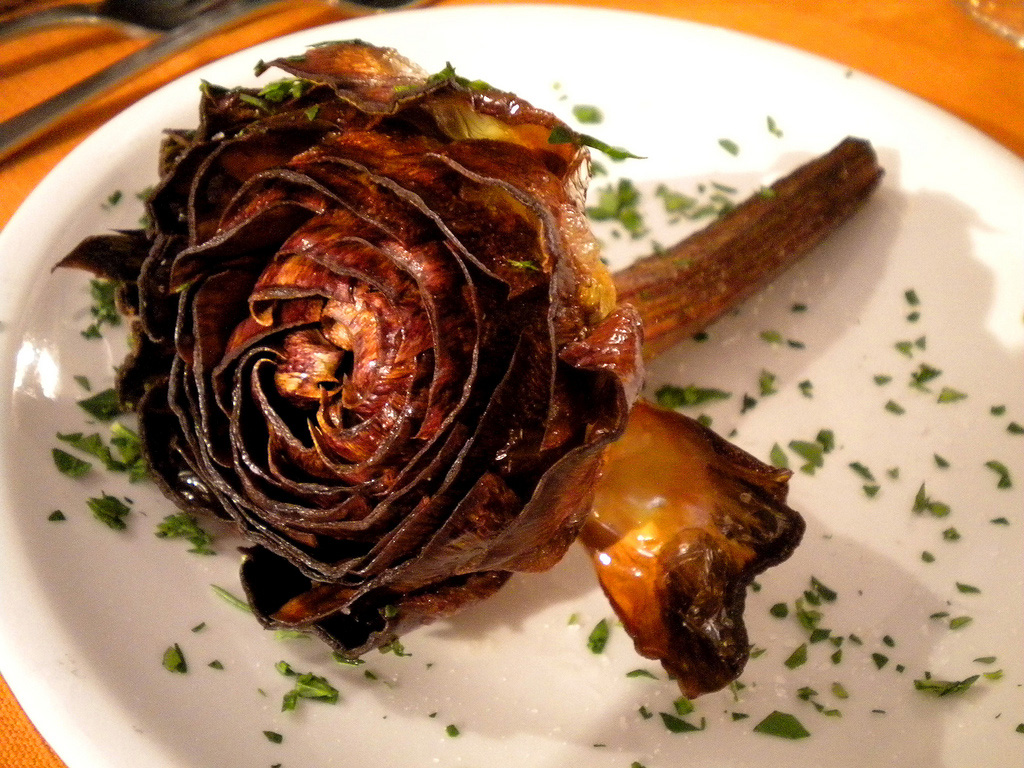
A Jewish-style artichokes ("alla giudia"): a delicious typical dish that you can eat in March
Wandering around the streets of the ghetto, especially Via del Portico d'Ottavia, you will notice many small restaurants. But where to eat in Roman ghetto? It's hard to make a list since all resturants present an excellent cuisine. Among the most famous, we mention Taverna del ghetto, Nonna Betta, Giggetto al Portico d’Ottavia and Sora Margherita. We also recommend a visit to Boccione, an excellent bakery.
BOOK A CULINARY TOUR TO THE GHETTO
The Jewish ghetto of Rome is a little hidden jewel between the Tiber and Piazza Venezia. Often, due to haste or lack of attention, this neighborhood is snubbed by tourists. Our advice is to spend 15 minutes, even if only for a walk, to discover these hidden treasures unique in the world.
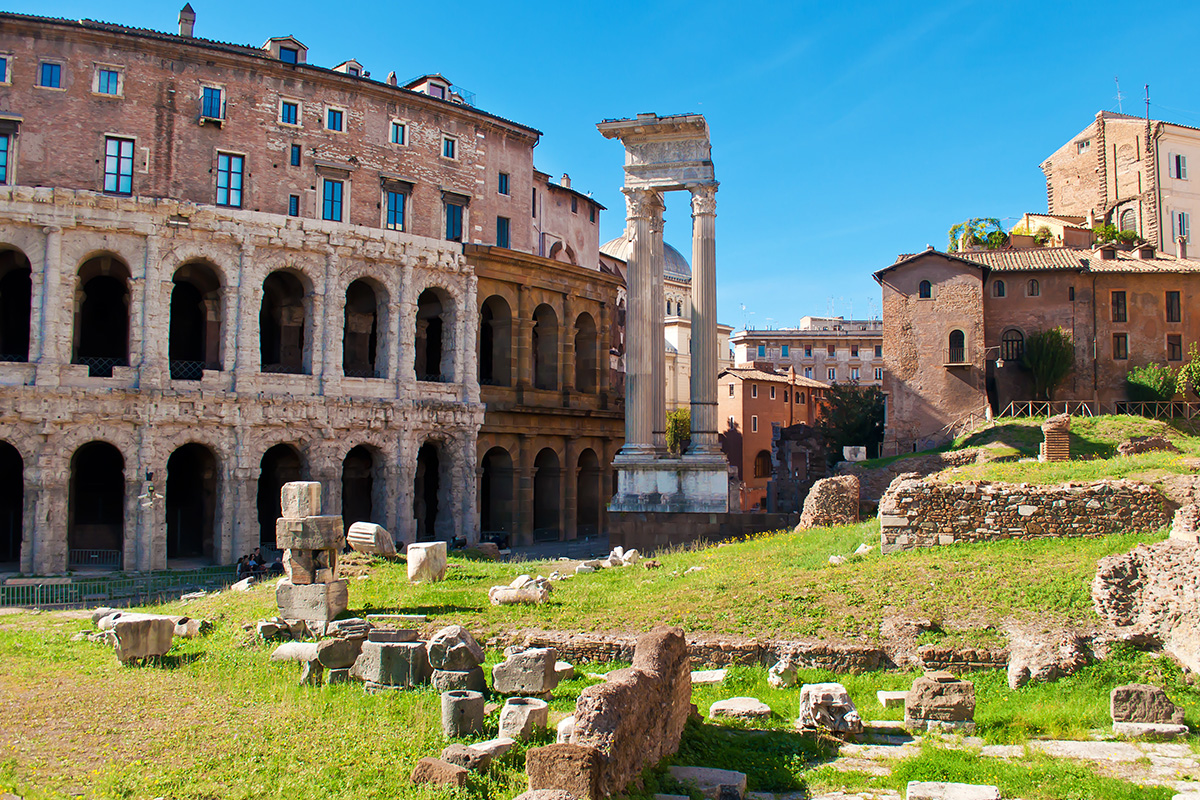
A glimpse to the Roman ghetto: Teatro Marcello
For further information on visiting hours and ticket prices, please read the box at the bottom of this article.
Useful information
The Jewish ghetto of Rome: history, how to get there and where to eat
Access to the Synagogue is only by guided tour through the Jewish Museum entrance.
- HOW TO GET THERE
From Roma Termini Station go to the bus stop and take the line 70.
Get off at Largo Torre Argentina and walk for about 10 minutes.- TIMETABLES
The Jewish Museum opens every day from Sunday to Friday in the following visiting hours:
WINTER OPENING HOURS (from October 1st to March 31)
Sunday – Thursday: from 10 a.m. to 5 p.m. (last admission at 4.15 p.m.).
Friday: from 9 a.m. to 2 p.m. (last admission at 1.15 p.m.)*We inform that opening and closing hours may change during the winter months. For more information, please visit the official website and the Jewish Museum's Facebook page.
SUMMER OPENING HOURS (from April 1st to September 30)
Sunday – Thursday: from 10 a.m. to 6 p.m. (last admission at 5.15 p.m.)
Friday: from 10 a.m. to 4 p.m. (last admission at 3.15 p.m.)The Museum closes on Saturdays and on Jewish holidays.
Guided visits for the Synagogue are scheduled every hour in English and Italian.- PRICES
Tickets for the Jewish Museum also include a guided tour into the Tempio Maggiore and the Spanish Temple:
full ticket €11
groups €8 per person (minimum 20 people, one escort for free)
students €4
disabled people, children under 10 (except groups): free admission



 PORT MOBILITY CIVITAVECCHIA
PORT MOBILITY CIVITAVECCHIA










